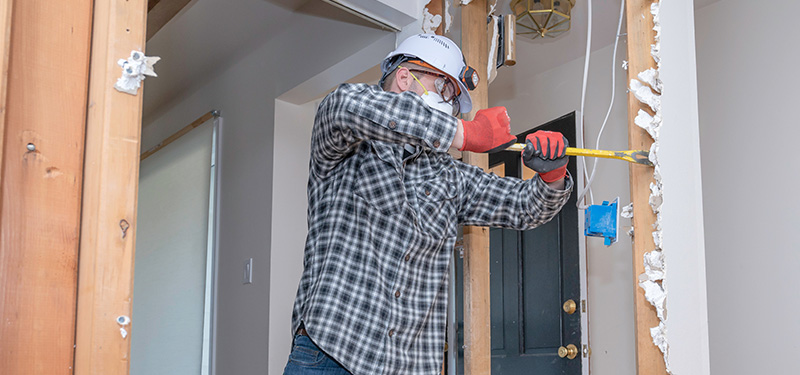In addition to the many considerations that associations and multi-family property owners must analyze when undertaking repairs and improvements (e.g., financial considerations, and what consent may be required to permit the improvement), those associations and/or owners should also be aware that projects impacting access to buildings and/or projects which pertain to facilities open to the public – such as updating the pool, repairing the sidewalks, or altering a building entrance – could trigger state (and federal) accessibility requirements.
If you need help determining whether a specific project will need to meet state accessibility requirements and/or if you may need to seek relief before the AAB, please do not hesitate to contact us.
This article focuses on the state accessibility requirements and relief. The analysis of whether the state accessibility requirements come into play is highly fact driven. Before a determination can be made as to whether state requirements will be triggered, it will be necessary to have the scope of work prepared to determine whether the work comes within the ambit of having to meet state accessibility requirements. If it does, a second inquiry into the feasibility of compliance with state accessibility requirements will be necessary and, if feasible, at what expense. This feasibility analysis, if necessary, may very well require expert opinion of the limitations imposed by the site, options for accessibility, and/or cost estimates.
A general framework and questions for consideration are as follows:
Does the scope of the work to be performed come within the purview of state access requirements?
In general, repairs, remodeling, and additions to public facilities (which is defined to include common areas open to the public under the state statute), will require compliance with the access regulations imposed by the state. Maintenance activities and basic repairs and certain defined work does not require compliance (if the work is limited to mechanical or plumbing systems, for instance, and does not alter areas of accessibility or is a type of excluded masonry repair). See, 521 CMR 3.3. If the work being performed amounts to less than 30% of the full and fair value of the building and the work costs less than $100,000.00, compliance may not be necessary.
If the work to be done does come within the purview of the state accessibility requirements, would it be impracticable or would it result in excessive or unreasonable cost to comply?
A project that otherwise may be subject to state accessibility requirements, may be able to obtain a variance if to achieve strict compliance with state accessibility requirements would be impracticable. Work is impracticable if it would be; (1) technologically or legally unfeasible, OR (2) compliance would result in excessive and unreasonable costs without any substantial benefit to persons with disabilities.
The first way to show that the work would be impracticable is to demonstrate that it is technologically or legally unfeasible. A ramp to a new/upgraded pool may be physically impracticable because there is not enough land to grade a ramp or space to fill in land, for example. It may be legally impracticable if to construct a conforming ramp you would have to build over the property line to achieve compliance. In such cases it may require a specific expert opinion that, for example, based upon the topography and current grading (or whatever the specific barrier is) the work is unfeasible. Another consideration is, would the work undermine other elements of the project or site? Compliance may not be achievable if it would undermine the structural integrity of the building.
Second, would the proposed work to achieve compliance with state accessibility requirements be excessively/prohibitively expensive without substantial benefit to persons with disabilities. A cost-benefit analysis is not relevant if the Architectural Access Board (“AAB”) determines that there would be a substantial benefit to persons with disabilities. (Note that the Commonwealth’s AAB develops and enforces regulations designed to make public buildings accessible to, functional for, and safe for use by persons with disabilities). Therefore, only if there is no substantial benefit does the issue of the cost of complying with the regulation become important. See, 521 CMR, 4.1., 5.1., J.M. Hollister, LLC v. AAB, 469 Mass. 49 (2014). Equal access (where there is none or it is not on the same terms) is a substantial benefit. Interpreting similar statutes, the courts have rejected arguments that the accessibility work would be “impracticable” simply because it was costly – but there are limits. For instance, one court concluded the installation of an elevator that would cost as much as $150,000.00 would be excessive in a building of a certain size, but the installation of a less expensive chair lift would not. In another case, where remodeling to provide an accessible entrance would cost between $50,000.00-$110,000.00, the court found that was not excessive.
If work would otherwise require compliance with state accessibility requirements, but that work is impracticable for the reasons set forth above, the AAB is empowered to hear petitions for a variance and may waive strict compliance with the state accessibility requirements. In December of 2021, the AAB updated its variance petition application, which can be found online. Once a complete application is submitted, the AAB will put the matter on its docket in approximately 3-5 weeks. The AAB gives local agencies --including the local building department, local independent living council, and disabilities commission, all of whom must also be served with the application -- a 14-day window to comment on the application. The AAB reviews new cases and holds hearings on variance applications every other Monday.
If you need help determining whether a specific project will need to meet state accessibility requirements and/or if you may need to seek relief before the AAB, please do not hesitate to contact us.


